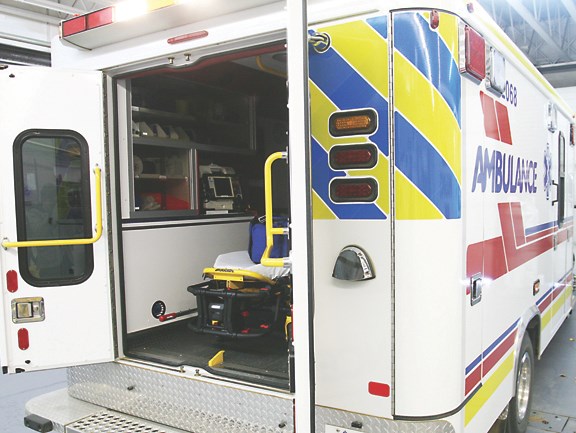Bonnyville Municipal Ambulance is preparing to fully implement a new program aimed at reducing permanent muscle damage resulting from cardiac arrest. The plan is to have the Vital Heart Program fully operational by January 1, 2011.
The program is designed to expedite the evaluation of the patient and the administration of TNK, a drug designed to remove the blockage and allow oxygen to the heart, and reduce the chance of damage occurring. There is an 80 per cent chance of reducing symptoms and eliminating permanent damage of the heart muscle when paramedics administer TNK on scene, rather than waiting for a doctor to do it once the patient has arrived at a hospital, according to Bonnyville Municipal Ambulance manager and paramedic Ken Theodore.
The reason for the need to expedite both the evaluation of the patient and administration of the drug is because there is only a three-hour window following the onset of cardiac arrest symptoms to eliminate the chance of permanent damage, he said.
Theodore expressed concern that many prospective patients wait until their symptoms become severe before calling for an ambulance – in many cases, closing the three-hour window. Also affecting evaluation and administration times is the fact that several patients will also assume they are able to finish the job they are doing or even drive themselves into the hospital when experiencing chest pains.
Theodore said, “If you need to see a doctor for chest pains, you probably need an ambulance.” By calling an ambulance, a patient would be responded to immediately, evaluated, and then paramedics could administer TNK on the spot, if the patient meets the criteria of cardiac arrest.
With an immediate response, the likelihood of still being within the three-hour window is drastically increased. “Time is muscle,” explained Theodore. The less time the heart muscle is deprived of oxygen – which occurs during cardiac arrest – the less permanent damage is done. TNK is designed to reduce the chance of damage occurring.
Theodore acknowledged it might seem expensive to call for an ambulance. But he justifies the one-time expense ($400/ambulance response) as a short term cost to reduce long-term or even permanent damage. In fact, said Theodore, a one-time expense to ensure full and quick recovery will reduce individual long-term costs, as well as long-term costs to the entire health care system. “If you look at what we charge compared to the costs of being a cardiac cripple or in long-term disability” the difference is huge. Theodore added, “It's a program that will significantly benefit the Bonnyville area.”
Although this program may seem as though it could be implemented very quickly, the opposite is true. Programs such as these, requiring expertise and a full understanding of the program, can take years to implement. The Vital Heart Program has been in the works at the Bonnyville Municipal Ambulance for five years, but it is only this year that it received the equipment and funds to proceed to full implementation. Theodore explained, “Getting on board with Alberta Health Services has sped up the process recently.”
Bonnyville Municipal Ambulance used a significant portion of its 2011 budget for new equipment to purchase two new Lifepak 15 defibrillator monitors, which are needed to participate in the program, due to the need for updated technology.
The paramedics and EMTs must also be trained on the new equipment and practice the new procedures. This will take each responder 4-6 hours of training, once the new equipment is installed.
The equipment must also go through 2-3 weeks of testing prior to implementation.
Theodore plans to have the installation, testing and training done by the end of the year and the program fully implemented by Jan. 1. “Once all the trials are done, then we'll put the drugs in the (ambulance) and we'll be good to go.”



